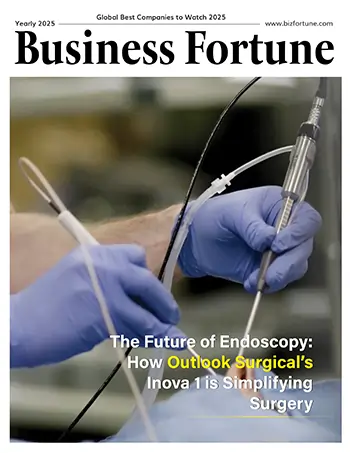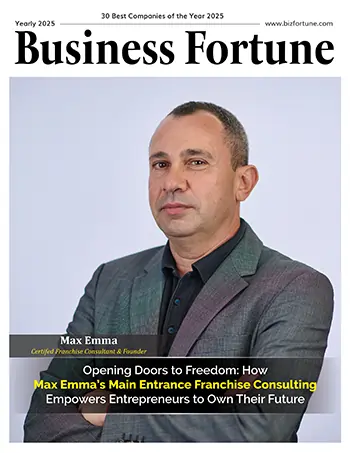Home Innovation Software The Qubit Frontier: Why the Fu...
The Qubit Frontier: Why the Future of Computing Is Already Here
Software

Business Fortune
21 April, 2025
We are living in a momentous and exciting period. The age of dependable quantum computing is upon us. Since the electronic calculator was created in the 1960s, computing has come a long way. Over the past several years, there has been considerable advancement in the field of information processing. Technology has made feasible what were once considered science fiction fantasies. The speed and power of classical computing have increased, and our supporting hardware has gotten smaller and more versatile.
The Quantum Era's Dawn
Different from conventional computing, we are now entering a new data era called quantum computing. Quantum computing is expected to accelerate our progress by impacting the domains of artificial intelligence and data analytics. We will be able to address some of the most challenging issues that humanity has ever encountered thanks to the speed and strength of quantum computing.
The Science behind Quantum Computing
Quantum computing is linked to the enigmatic field of subatomic physics, which relies on computations on levels of uncertainty at the atomic level. The basis of quantum computing is superposition, a fundamental concept in quantum physics that permits an entity to exist in several states simultaneously. Quantum computing, according to Gartner, is the technique of doing calculations with atomic quantum states. Data is stored in qubits (quantum bits), which are capable of storing every possible state simultaneously. Data saved in one qubit can affect data stored in another, even when they are physically apart. Quantum entanglement is the term for this occurrence.
Put more simply, instead of using the traditional binary bits of ones and zeros for digital communications, quantum computers use quantum bits or qubits. Quantum computers use atoms because they are physical systems that can exist in both 0 and 1 states at the same time.
The Technologies and Hardware Fueling Quantum Progress
The hardware for quantum computing comes in a wide variety of technologies. Superconductors, ions, cold atoms, silicon dots, topological materials, photonic crystals, nitrogen vacancies, and nuclear magnetic resonance are just a few of the materials that may be used to create quantum computers. The most advanced systems are superconducting and ion-based.
At their core, they are all two-level energy systems called qubits, which are capable of entanglement and superposition. In some material systems, multiple energy levels known as qutrits and qudits for three or four energy levels, respectively, are being studied. Based on how they get at the solution, quantum computers may be broadly divided into four types:
Gate-Based Quantum Computing computes a logical solution of a quantum algorithm using discrete gate operations and measurements;
Analogue Quantum Computing: This method uses continuous variables and transformations to physically simulate the quantum state; for example, fermionic atoms are physically confined in a physical lattice to act like electrons.
Based on Measurements One of the more recent technologies is quantum computing. In a common application, a photonic lattice is used to produce a huge, entangled state, and photons are extracted from the lattice to operate as a gate.
Quantum annealers, which are limited to resolving certain optimization issues that, may be explained by Ising Hamiltonians.
Knowing which technologies to employ and which areas to concentrate on might be intimidating for someone new to the world of quantum computing. Different quantum computers employ various methods to arrive at the solution. Ions are used as qubits in ion-based computers, for instance, and may be physically transported from one place to another, but with a superconducting qubit, information moves along resonators between static qubits. These technologies are at different stages of maturation, and each has its benefits. We go over the key features and metrics to take into account in the next section.
Innovations Accelerating the Development of Quantum
The last several years have seen particularly groundbreaking scientific advancements in quantum research, which have resulted in computers that are far quicker and more precise. What were formerly thought of as science fiction dreams have given way to technological reality.
A team of researchers at the University of Oxford has achieved the first wireless transfer of a quantum algorithm between two different quantum computers. By combining their distinct qualities, the two cores produced a potent computer that was able to solve problems that neither core could solve alone. The Oxford researchers were able to send simple data between computers in near real-time by utilizing quantum entanglement.
Furthermore, new developments that make quantum computing easier to construct and more efficient at scaling are making it more and more viable. The gate model and quantum annealing are the two primary approaches to quantum computing. The usage of annealing systems to obtain workable quantum solutions is growing. Moreover, gate models may emerge much earlier than anticipated. In the past year alone, significant progress has been made in both annealing and gate models:
The timescale for the realization of large-scale quantum computing has been increased by Microsoft recently. Its new Majorana 1 processor is based on opposing particles. Many electrons moving in unison as if they were a single particle are essential to Microsoft's operations. With this technique, qubits might be quickly scaled for real-world uses. The potential for one chip to outperform the aggregate performance of all modern computers is huge.
Google introduced Willow, their newest quantum processor with notable improvements in error correction, along with its quantum computing strategy. Willow can scale up and lower mistakes by using additional qubits. Google called the research a milestone that will make quantum systems more reliable. Google has been working on creating quantum devices for the last ten years. In less than five minutes, the company's newest Willow chip can perform a calculation that would take a top-tier supercomputer today, such as Tennessee's Frontier supercomputer, which is 10 septillion years old—technically older than the universe itself.
The new 4,400+ qubit Advantage2TM processor from D-Wave Quantum has been successfully calibrated and tested, marking a major breakthrough in quantum computing. The sixth-generation system beats the current AdvantageTM system in terms of performance, with the capacity to solve problems 25,000 times quicker and generate five times better outcomes for high-precision applications. In 99% of satisfiability problem testing, the CPU outperformed the current system, demonstrating remarkable performance in optimization, artificial intelligence, and materials science applications.
Recently, Quantinuum introduced the first trapped-ion 56-qubit quantum computer in the industry. Earlier last year, Quantinuum's H-Series became the first to achieve "three 9s" - 99.9% - two-qubit gate integrity across all qubit pairs in a manufacturing device, marking a significant milestone that enables fault-tolerance. High fidelity is provided to further the area of quantum algorithms for financial use cases specifically, as well as for industrial use cases more generally.
Wrapping with a conclusion—Quantum Computing is No Longer a Dream — it’s Happening Now
From theoretical speculation to practical innovation, quantum computing has advanced and is set to transform how we tackle challenging issues in a variety of sectors. The pace of innovation is increasing as companies and digital giants push the boundaries, such as Oxford's cross-computer quantum data transmission and Google's error-correcting Willow chip. Quantum systems are expected to influence a wide range of fields, including artificial intelligence, encryption, finance, and materials research, as scale and performance continue to advance. Reliable quantum computing is not only a thing of the future; it is currently here.


































